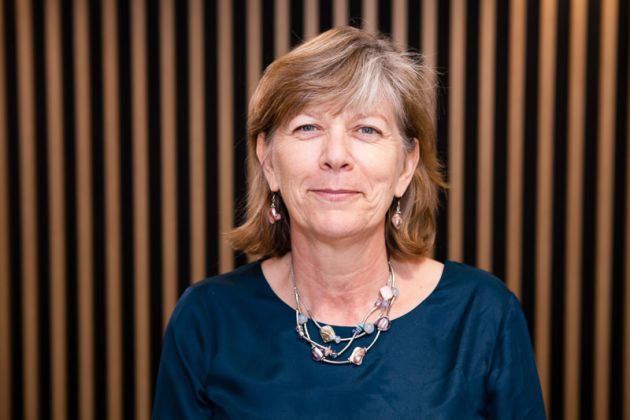The Queensland Community Pharmacy Scope of Practice Pilot, which kicked off on 24 April 2024, is a game changer for pharmacist prescribing, allowing trained pharmacists to diagnose and prescribe treatment for 17 different conditions.
There are currently 12 North Queensland pharmacies offering the prescribing service, set to expand to hundreds after pharmacists complete the 12-month higher education training course –delivered by James Cook University (JCU) and Queensland University of Technology.

Dr Peta-Ann Teague, co-designer of JCU’s training program, explains why pharmacists are integral to filling healthcare gaps and what it takes to be a pharmacist prescriber.
Becoming a pharmacist prescriber
When considering how to design the pharmacist prescribing course, Dr Teague spent an evening observing the happenings in a busy community pharmacy.
She was left astonished at the number and type of issues people brought to their pharmacist, and the rapidity with which a decision needed to be made about how to best support and/or direct the patient.
‘One of the things this pilot can do is equip pharmacists with the skills to adequately and appropriately manage some of these conditions,’ she said.
‘Because if the default position is always “Oh, you need to see your GP for that”, but you can’t get in to see the GP, it’s not using these highly skilled professionals adequately.’
The Queensland pilot is different to other pharmacist prescribing trials and programs, such as those addressing urinary tract infections – where a patient comes in with symptoms of frequent urination, for example.
‘Although the specified conditions [in the QLD pilot] have very good evidence-based protocols around them, a patient doesn’t come in and say, “I’ve got mild to moderate psoriasis”,’ said Dr Teague.
‘It’s up to the pharmacist to do the appropriate assessment, make a clinical decision as to whether the patient does indeed have psoriasis, how much of it falls within their scope, and at what [point] do they need to involve others.’
With that in mind, a key focus of the training’s clinical components entailed ensuring pharmacists understand the biopsychosocial model of patient care.
‘When a patient comes in with a symptom, pharmacists in the pilot have been trained to assess them holistically,’ she said.
‘They learned how to take a history, perform an appropriate and adequate patient assessment, then come to a decision about the next step in managing the patient – which could involve motivational interviewing for smoking cessation or referring the patient on.’
To avoid fragmentation of care, one of the big learning points for pharmacists involved how to approach collaborative co-management with a person’s usual GP.
‘Some of the questions pharmacists will ask a patient as part of the biopsychosocial assessment is, “who do you usually see for your healthcare?” and “have you seen them recently?”said Dr Teague.
‘It’s about really understanding where the patient is at that time in their presentation to the pharmacist.’
More prescribers urgently needed
After working as a GP in regional and rural Australia for two decades, Dr Teague is well versed in the pressures on primary care to provide health services to patients.
Regional and remote communities face longer waiting times to see GPs and specialists, resulting in higher rates of preventable hospitalisations, with potentially avoidable deaths increasing in prevalence the further away people live from metropolitan areas.
Many small communities are ‘one or two resignations away’ from not being able to provide health services, thinks Dr Teague.
‘Locum services are also extremely expensive and they don’t usually know these communities,’ she added.
It’s not only regional, rural and remote areas that are short staffed. ‘There are some parts of outer Metro areas that could also benefit from a workforce injection into primary care,’ said Dr Teague.
Looking at innovative ways of extending scope of practice for health professionals already in those communities was therefore a key driver for Dr Teague’s involvement in the Queensland scope of practice pilot.
‘Community pharmacists embedded in regional and remote areas understand their communities,’ she said. ‘They’re not forced conscripts. They want to be there and provide a service.’
But it was Dr Teague’s ‘enormous’ professional regard for colleague Associate Professor John Smithson, Head of Pharmacy at JCU and lead designer of the pilot course, that propelled her to prepare pharmacists to deliver a high-quality, cost-effective health service to those in need.
‘He came to talk to me about this possibility, some years ago now,’ she said. ‘And I thought, “yes, I’ll definitely lean into this and help him wherever I can”.’
New horizons for health care
The pharmacists who successfully completed the training experienced a ‘big lift’ in their practice skills, thinks Dr Teague.
‘I’m full of admiration for them,’ she said. ‘We really pressed them hard to understand and master competence in these skills, and then practise them.’
Those who have embraced the new model of care will contribute a great deal to patient care in their community, Dr Teague believes.
‘We already know that for many patients, the community pharmacist is someone they see more than their GP, and they have a really trusting relationship with them,’ she said.
‘Many patients will be comfortable receiving treatment from a pharmacist if they can’t get in to see their GP, or they think the pharmacist is the right person to talk to.
‘The trick here is for prescribing pharmacists to develop the skills to know what’s within their scope and what isn’t, which will come with time.’
When the pilot draws to a close, Dr Teague hopes the outcome is an evidence-based, collaborative model of patient-centred care.
‘My impression of these pharmacists is that they are smart, conscientious and caring, and they don’t want to be doctors,’ she said. ‘They want to continue being pharmacists, providing the best care they can.’
For GPs who are sceptical about the pilot, she advises them to find a prescribing pharmacist in their area and have a cup of tea with them.
‘Sit down, find out how to work together in the best possible way and approach it with a collaborative spirit,’ she said. ‘Because that way, we will be more likely to get good patient outcomes.’



 John Jones MPS, pharmacist immuniser and owner of My Community Pharmacy Shortland in Newcastle, NSW[/caption]
John Jones MPS, pharmacist immuniser and owner of My Community Pharmacy Shortland in Newcastle, NSW[/caption]


 Debbie Rigby FPS explaining how to correctly use different inhaler devices[/caption]
Debbie Rigby FPS explaining how to correctly use different inhaler devices[/caption]




 Professor Sepehr Shakib[/caption]
Professor Sepehr Shakib[/caption]

 Lee McLennan MPS[/caption]
Lee McLennan MPS[/caption]
 Dr Natalie Soulsby FPS, Adv Prac Pharm[/caption]
Dr Natalie Soulsby FPS, Adv Prac Pharm[/caption]
 Joanne Gross MPS[/caption]
Joanne Gross MPS[/caption]





